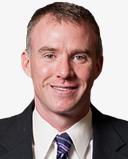Media
The Blind Side: How the NFL Can Teach Us About Blind Spots and Behavior Change
Blind Spots and Behavior Change
Posted January 18, 2011
In Michael Lewis' best-selling book, "The Blind Side", Lewis details Michael Oher's life as a football player protecting the blind side of his quarterback. Now a star lineman in the NFL, Oher and others on the offensive line protects their quarterbacks' blind sides, while hoping these same quarterbacks do not have blind spots in their vision of the field as they are being hunted by ferocious defenders.
In the last two editions of Goal Posts, we discussed the NFL season as it pertained to the blind spots of Randy Moss and Brad Childress. Moss, one of the top receivers in the NFL was jettisoned from New England to Minnesota, and then released from Minnesota before Tennessee picked Moss up off of waivers. Moss had his poorest season as a pro, and did not seem to contribute to any of the three teams much at all.
New England needed a deep threat, and nowhere was that more evident than in Sunday's loss to the New York Jets. Why would New England have traded one of the NFL's top receivers of the past decade, if not its history?
Childress has lead the Vikings to two consecutive division titles, yet was unceremoniously dumped, a move supported by the vast majority of Vikings fans.
The Patriots did not believe Moss would change his behavior to put the team in front of the individual. The Vikings did not believe Childress could lead them to a Super Bowl. How do we make difficult decisions regarding behavior change?
1) Use historical data and/or personal experience. The Patriots have had success with other players with troubled pasts. In fact, Moss had one of the greatest seasons by a receiver in history during his first year in New England. However, it was clear that Moss was motivated by other things than the team this season. Bill Belichick has a reputation for being intolerant of "Me" over "We" in his players.
2) Rely on trusted experts. It appears that Childress did not utilize (or have) a trusted group of people who could help him navigate the rocky waters of the media and fans. In this day and age, approval ratings of politicians, coaches, and CEO's all seem to be more relevant than they did 10-20 years ago. The internet age has brought with it an instant voice for anyone with an internet connection and an opinion. Childress did not appear to learn from his mistakes in dealing with his players and dealing with the media.
Most models of behavior change require that an individual:
1) is aware a change needs to be made,
2) wants to make a change, and
3) is capable of making a change.
Change is difficult. Change is hard. It forces us out of
our comfort zones. It forces our bodies and minds to go to a place that runs counter to our body's desire for homeostasis. As a result, change is at least immediately unpleasant. Once we work through the immediate discomfort, benefits of positive change can be experienced. Neither Moss nor Childress appeared willing to work through that initial discomfort.
Social psychologists generally acknowledge two basic social needs: the need to feel good and the need to be accurate in our perception of the world. Oftentimes, the need to feel good trumps the need to be accurate because it is more immediately gratifying to us. However, the need to feel good can lead us down dangerous paths where we seek immediate gratification over the longer lasting satisfaction that can bring sustained happiness.


